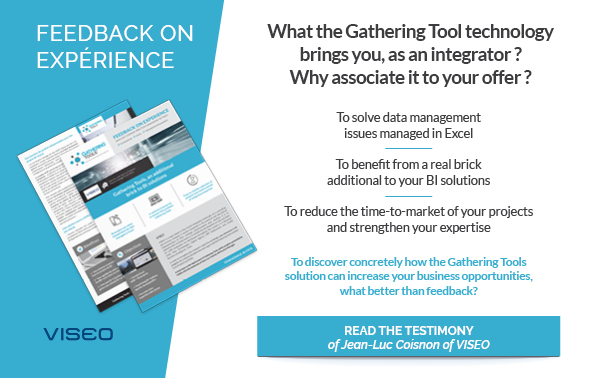As an integrator you are regularly requested for very strategic projects within companies: implementation of a new ERP, implementation of BI tools, EPM standard business solutions for budget management, or TMS software for the cash function. You do not have the right to make mistakes because the future of your client, and your partnership, may depend on it! Yet, a factor often disrupts your projects known as Excel.
Why can’t you abandon such processes? Is Excel very necessary to be included in your integration projects? What are the existing solutions? Here are some answers.
State of affairs: Excel, the eternal “weak link”
 The Excel processes are everywhere, in every company, from the local SBE to the publicly traded multinationals. It is a universal tool. But, it is also a dangerous tool. Any head of a department has experienced or will experience, a panic when an Excel file fails. The consequences can be disastrous. Take the example of the investment bank JP Morgan which, because of the disappearance of an Excel document in 2012, has lost $ 6 billion. This is certainly an extreme case. But poorly managed workbooks can actually cost a company a lot of money. Why ? Because Excel files from businesses are often the first link in a data processing chain.
The Excel processes are everywhere, in every company, from the local SBE to the publicly traded multinationals. It is a universal tool. But, it is also a dangerous tool. Any head of a department has experienced or will experience, a panic when an Excel file fails. The consequences can be disastrous. Take the example of the investment bank JP Morgan which, because of the disappearance of an Excel document in 2012, has lost $ 6 billion. This is certainly an extreme case. But poorly managed workbooks can actually cost a company a lot of money. Why ? Because Excel files from businesses are often the first link in a data processing chain.
So, it is Impossible to make a clean ballot. Many business processes are managed for all or part through this spreadsheet. The reasons given are many: existing software too restrictive or not adapted, no software for this specific need, a lack of licenses and therefore a switch to Excel for communication with subsidiaries, etc. Users are doing “as they can” and are using this adaptable tool, which is known to everyone. When Excel files and VBA macros were developed here and there, there was a good reason at the start!
As an integrator, it is sometimes a real dilemma to know what to do with these high added value Excel datasets that are exchanged each day? By choosing to ignore them, an entire project can lead to failure. Integrating your Excel data into your projects is essential. So how to do that?
Imperfect-ineffective solutions
 There are several ways to include your Excel data in your integration projects. One of the main ways, is to go on a risky attempt with the CIO, which might attire the annoyance of the business people. The goal? Get users in the “right way” and force them to use the software available to them. This will allow you to connect the Excel data to your project, and to allow the CIO to reduce the shadow IT phenomenon. Problem: Existing software does not always meet specific needs. In addition, users could pretend to accept and resume their good old habits quickly. Your wonderful project could turn into an empty shell.
There are several ways to include your Excel data in your integration projects. One of the main ways, is to go on a risky attempt with the CIO, which might attire the annoyance of the business people. The goal? Get users in the “right way” and force them to use the software available to them. This will allow you to connect the Excel data to your project, and to allow the CIO to reduce the shadow IT phenomenon. Problem: Existing software does not always meet specific needs. In addition, users could pretend to accept and resume their good old habits quickly. Your wonderful project could turn into an empty shell.
The second solution is to embark on custom development to allow users to “bring” their valuable data into the fold of the IS and more specifically, your project. The advantage is that you will be seen better by the businesses. But convincing the CIO, and those who hold the strings may be more complicated. Indeed, whether through CPM processes or precise developments, budgets and deadlines can quickly explode. In addition, the issue of maintenance and scalability of such solutions may arise. In conclusion, it’s far from an ideal answer.
An entirely different possibility exists: Gathering Tools. So what are you waiting for to learn about this Excel alternative and give your projects another dimension?





